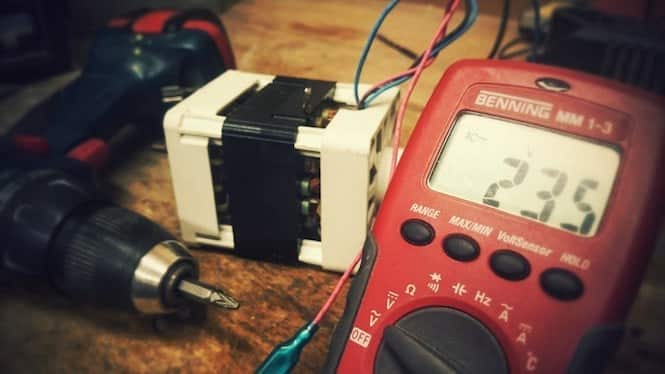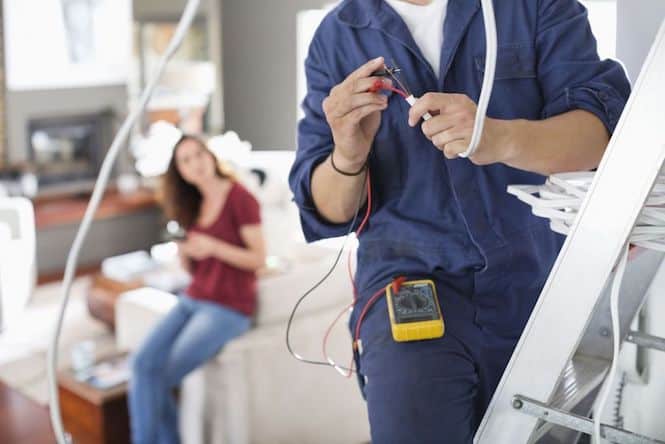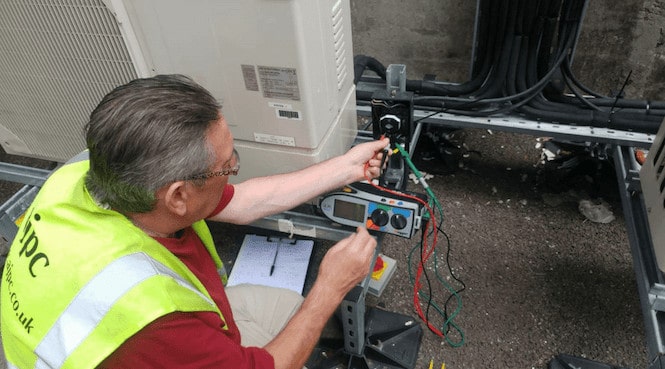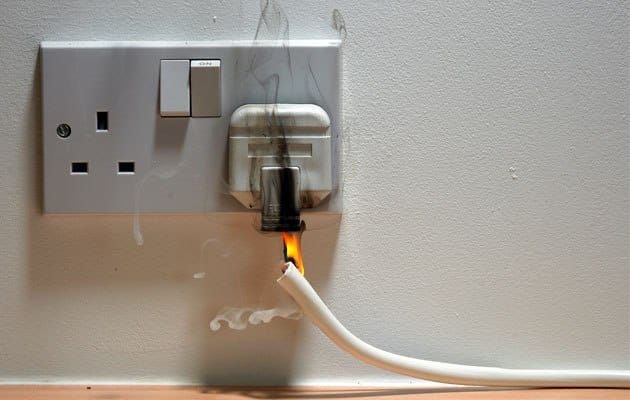Find My Local Expert What Are the Benefits of Using...
Read More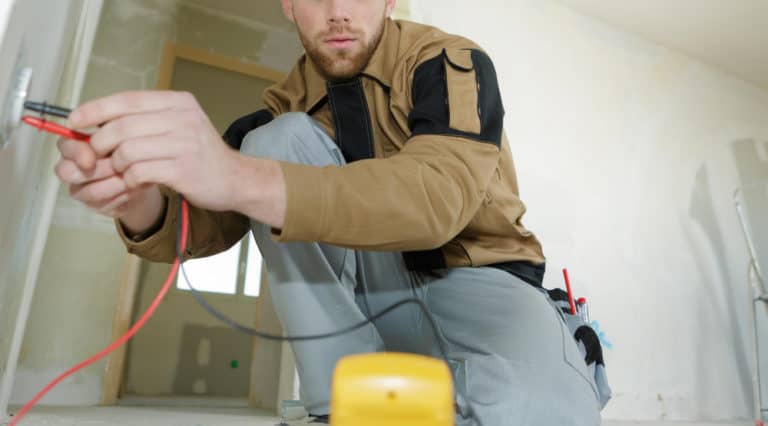
How long does an Electrical Safety Check Take?
Electricity is a tricky beast. With many problems you might encounter in your home or business premises, there are signs you can be on the look-out for, or that are too obvious to miss. With electricity, there are a multitude of ways an electrical problem can develop without any visible cues, and a lot of the symptoms you might notice make it hard to pin down what the actual cause is.
Add to all this the fact that there are many things you just aren’t legally allowed to do yourself unless you are a qualified electrician (or get a qualified electrician to sign off on your work), and you have a recipe for a frustrating—if not dangerous—time with your electrics.
Fortunately, there are things you can do, and an Electrical Safety Check is one such thing. An Electrical Safety Check will expose any problems with your electrics, and can often provide enough information for a trained electrician to establish where and what the problem is, which can in turn allow them to give you an idea of repair times and costs.
As a general rule, you should get your property tested periodically as a matter of course. For a typical homeowner, this period is around ten years, though it drops to five years if the property is being rented out, and rented properties should also be tested any time new tenants come in. Property should also undergo an Electrical Safety Check when changing hands, either by the seller before completing the deal, or by the buyer after completing the deal.
Of course, you can get an Electrical Safety Check any time you like. If you’re a homeowner and feel like being extra cautious, you can get a check every five years. You can even do it annually, though that would probably be overkill.
Can You do Your Own Safety Checks?
The answer to this question is a little nuanced. On the one hand, absolutely not. That is, in the sense of getting a certificate that would satisfy any legal requirements, such as a landlord’s obligation to get a safety check every five years. You may have the tools and know-how to perform the check, but unless you are a qualified electrician, you wouldn’t be able to issue a certificate.
Of course, that may not be important. If you have the tools and know-how but are not a certified electrician, you might perform a safety check on your home for your own peace of mind. But, as we said, you wouldn’t be able to certify it legally.
For those of us who are not in possession of the right tools for the job and necessary expertise to do the job, there is still something you can do. Again, you will never be able to certify anything, but visual checks are part of the game, and there is no reason you can’t carry those out yourself from time to time. In fact, it’s positively encouraged.
We could fill an entire post on what you would be looking for, so we won’t try to cover it all here. In brief, you are looking for any visible signs of damage or malfunction in your electrical fixtures, outlets, and switches. Obviously this would include things like physical damage, but also noises, sparking, erratic behaviour of electrical items (flickering lights, for example), tripping breakers, and anything else that is an obvious sign of an electrical problem.
These checks are far from comprehensive, but they might reveal a problem. When you consider that you can perform a visual check of your electrical systems in under thirty minutes, for free, any time you like, you should start to see why this is worthwhile.
What to do on the Day Before the Visit
An Electrical Safety Check will be less effective if your electrician can’t get to everything they need to get to. Similarly, the check will take much less time if you get things ready before they arrive. With that in mind, let’s go over some things you can do to ensure things go smoothly during your Electrical Safety Check.
Make Sure You Have Credit
If you are on a prepayment electric meter, you will need to make sure there is enough credit on that meter to allow your electrician to perform the tests they need to perform. If the power cuts out two minutes after they arrive, they won’t be able to do their job.
Unplug as Much as Possible
Remember, your electrician is testing the electrical wiring and other integral parts of the electrical systems in your property; they are not there to test all of your appliances (unless you have made arrangements for that). Appliances can cause problems with electrical tests, such as interference, surges, and other things that make it hard for your electrician to accurately gauge the health of your electrical systems.
Of course, there will be things that can’t be unplugged, such as freezers, and things that you might not be physically able to unplug, such as electric ovens, but everything that you can unplug should be unplugged.
Clear the Area
Your electrician will need access to your fuse board and meter to perform their checks, so you will need to make sure they have free access to those areas. That means removing any coats, appliances, boxes, or anything else in the area that will be an obstruction.
Open Up
Your electrician is going to need to get around the whole property, not just where the fuse board and electricity meter is. You will need to make sure all rooms are accessible, and ideally that the electrician can get to all outlets, switches, and electrical fixtures if possible.

Find a Babysitter
You will need to keep children and pets away from the areas your electrician needs to work. It is possible to do this by moving them around the house as your electrician carries out their tasks, but it is much better to just not have them be there for the duration of the Electrical Safety Check. If you have a family member who could look after them, or perhaps a partner or elder child who could take them out for a while, that would be ideal.
How Long Will it Take?
The precise length of the test will be largely dependent on the size of your property, so try to adjust your expectations with that in mind. That being said, an average Electrical Safety Check should take around 2-4 hours to complete. Another factor that will affect the time your check takes is the complexity of your electrical system. A smaller house with a lot of electrical circuits might take longer than a larger house with fewer electrical circuits.
What are the Processes Involved During the Inspection
The first thing your electrician will do is perform a visual check of your electrical systems, much like the one you can do for yourself that we mentioned above. Any problems that can be identified with a cursory visual examination are most likely going to be quite serious, and will need urgent attention. These are called “Code One” problems, and your electrician will have to repair those issues immediately. There are also “Code Two” problems, which are potentially dangerous, and “Code Three” which are recommendations for improvements, but necessarily problems.
Once the visual check is complete, your electrician will use certain tools and methods to perform a more thorough inspection of the state of your electrical systems.

Electric Safety Certificate
Once the EICR check is complete, you should be issued with a certificate that outlines the condition of the electrical installations. This is important in all situations, so make sure you get your certificate. For a landlord or business owner, it is a legal requirement, but even for a homeowner, there is a strong chance that a buyer will want to see a certificate before buying, and if you don’t have one, you may need to pay for another test to get a certificate. This is another reason why it is important to hire a fully certified electrician for your safety check. While uncertified electricians may be cheaper, they won’t be able to issue a legally recognised certificate.
Conclusion
Given the nature of electricity, it is important to stay on top of the health of your electrical installations. Problems can often develop invisibly, and all too often don’t show any signs of an issue until it is already serious.
The amount of electricity coursing through a residential or commercial property (industrial properties often have higher voltage circuits for heavy machinery), is enough to seriously injure or even fatally injure in certain circumstances, so it’s not something to be taken lightly. We recommend performing a visual inspection of your electrical installations at least once a year, and having a proper Electrical Safety Check no less than recommended timescales for your particular situation, though in the case of homeowners, it may be worth having a check more regularly. The best way to deal with an electrical problem is to make sure one never develops in the first place!
You May Also Like...
Guide on Electrical Inspection and Testing
Find My Local Expert A Guide about Electrical Inspection and...
Read MoreEmergency Electrician Service
Find My Local Expert when you need an emergency electrician...
Read MoreElectrical Installation Condition Report
Find My Local Expert Everything You Need to Know About...
Read MoreElectrical Fault Finding
Find My Local Expert Understanding Electrical Fault Finding An electrical...
Read MoreNeed your Electrics Checked?
My Trusted Expert Guarantee
Experts Have Been Vetted & Approved

